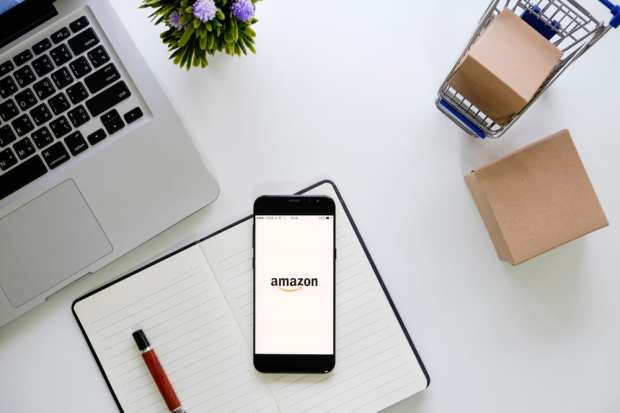Shifting The Finserv Focus To Amazon Sellers

The prolific success of Amazon has largely orbited around the company’s consumer-centric business model. The ability to offer online shoppers a seamless digital experience and what had been previously been an unprecedented level of product choice changed the eCommerce paradigm forever.
While this evolution changed the paradigm for online sellers, too, by breaking down major barriers to online sales and a global customer base, small businesses using such eMarketplace platforms can still struggle with having their own needs met.
Access to capital and other financial services are key challenges for many Amazon sellers today, particularly as the pandemic has squeezed supply chains and strained resources to meet surging demand and volumes. And while Amazon has begun to dig its heels into the B2B FinTech space in the rollout of its own financial services for its seller base, Helium 10 Vice President of Product John Gjeldum recently told PYMNTS that Amazon sellers continue to face a major gap in available financial products and services.
“They have many different needs,” he said, “whether that means finding a product, improving the performance of a product, managing their business — there is so much they have to deal with to grow and become successful.”
Filling A Market Gap
In June, Amazon announced a partnership with Goldman Sachs to roll out a small business credit line for merchants in the U.S. Sellers on the Amazon platform can now have access to Goldman’s Marcus revolving credit line of up to $1 million, an initiative that Amazon said aims to fuel the growth of merchants on the site.
Yet the product doesn’t go far enough to address Amazon sellers’ needs, according to Gjeldum, who noted that the very existence of companies like Helium 10 is proof that the needs of these companies remain unfulfilled.
“If Amazon were [adequately meeting sellers’ financing needs], then there would be no other companies providing services like this,” he said. “That’s inherently why there are different alternatives popping up.”
At the same time, however, traditional banks aren’t able to step in, either.
“For a traditional FI, you normally need a longer history for them to understand your business and performance,” explained Gjeldum. “You need to show regular financial statements. They have traditional ways of looking at whether a business is creditworthy, whereas some of these sellers may not have that kind of history or how it in that traditional way.”
In an effort to fill that gap, Helium 10 recently launched its Alta platform, which includes access to a credit line of up to $1 million, too. Gjeldum said the financing solution is more flexible than what’s currently available via Amazon, looping directly into sellers’ transaction data to understand sales volumes and capital flows.
Gjeldum also highlighted the need for financial service providers to offer more holistic solutions beyond access to capital. The Alta platform also includes features like Daily Pay Advance, which connects sellers to revenue immediately as opposed to having to wait several days or weeks to access that capital, as well as supplier payment solutions.
Challenges On A Global Scale
One of the biggest hurdles for Amazon sellers’ journey to success is expanding on a global stage. Though the Amazon platform makes it easier than ever to streamline the consumer-facing workflows of an operation, on the back end, Gjeldum noted, an array of hurdles that continue to stand in the way of these small businesses.
“Compliance is a huge piece of that,” he said, pointing to tax challenges of U.S. sellers that want to connect with customers in Canada or Europe. “That’s a huge problem for these sellers. There are all sorts of new tax jurisdictions that are very difficult for some sellers to understand and comply with.”
Along with Helium 10’s tax service, the Alta platform can also support cross-border payments with its digital wallet technology, which Gjeldum said negates the need for these small businesses to set up bank accounts in different markets or manage costly remittances or foreign exchange in order to transact globally.
The worldwide pandemic has, in some ways, made these points of friction even more painful for Amazon sellers, with Gjeldum noting that there will be more disruptions ahead that could further widen the gap between sellers’ product and services needs, and what’s available to them.
Suring volumes and the upcoming holiday season mean FBA (Fulfilled By Amazon) limits that are likely to force sellers to seek third-party service providers for their logistics and fulfillment needs, for example. Economic volatility and uncertainty also make it essential that small businesses are able to access capital to thrive — as well as to seamlessly pay suppliers to support their own business partners.
Amazon is likely to expand its B2B finserv footprint even further, many small businesses cannot afford to wait in order for entrepreneurs to find success and bring a part-time hustle into a full-time operation, Gjeldum said.
